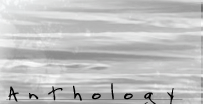Critical Essay: Tom Spanbauer
By Sage Ricci
Tom Spanbauer’s language comes from a wounded place inside
of himself. His explorations of character and place at times feel
like an attempt to quiet those wounded voices. Place becomes a
character, one who is often oppressed or oppressive, wounded or
wounder, or both.
Torch Song is a good example of place given a personal identity.
This Key West is one wounded “old bitch”, posing and
looking for attention. While she glitters on the surface, like
a rhinestone, she is just glass underneath. The undercurrent of
despair is palpable, reflecting a place and a way of seeing the
world that is out of control.
The poems about Idaho reflect an identity as well, but one different
than Key West. These poems are flat like the landscape, and the
hope of leaving that place seems to be what makes the images come
alive for the narrator(s). In untitled, the narrator tells the
story of his Aunt and her friend, a painter, who come to the farm
for a visit. This visit is seen with joy and a respite from “the
world sprayed out into the skies”. The last line, “the
green mountains”, lands the poem solidly back into a landscape,
but a landscape that is imaginary. The vision created is one of
escape from flat and dull, at least in the imagination.
Tyhee Flats paints a similar picture, though with broader strokes.
All of the images, this dull and tedious world that the narrator
is living through, are only relieved with the last line. The image
of the child narrator lying in bed and dreaming of escape haunts
the rest of the poem, lets us know this place is not friendly,
dangerous even.
Idaho is commented on a bit more humorously in the poem roberta.
the woman who talks about Roberta becomes a metaphor for Meridian,
Idaho. Spanbauer gives us a not quite unkind, though certainly
not desirable, picture of this place through this woman. His reference
to her poetry, “without shadows…high noon stuff”,
suggests a sentimentality and a lack of depth the narrator/author
projects onto the people and place. He comments on how surreal
this place seems with the line “this is no dream”.
We suddenly question if this place/poem is indeed a dream, the
question rising from the statement that it isn’t.
Tom Spanbauer’s straightforward imagistic style in down
to earth language creates series of images that tell his stories.
These stories are inferred from the places and the characters.
As he explores these wounded places inside himself, we come along
with him through his images.
